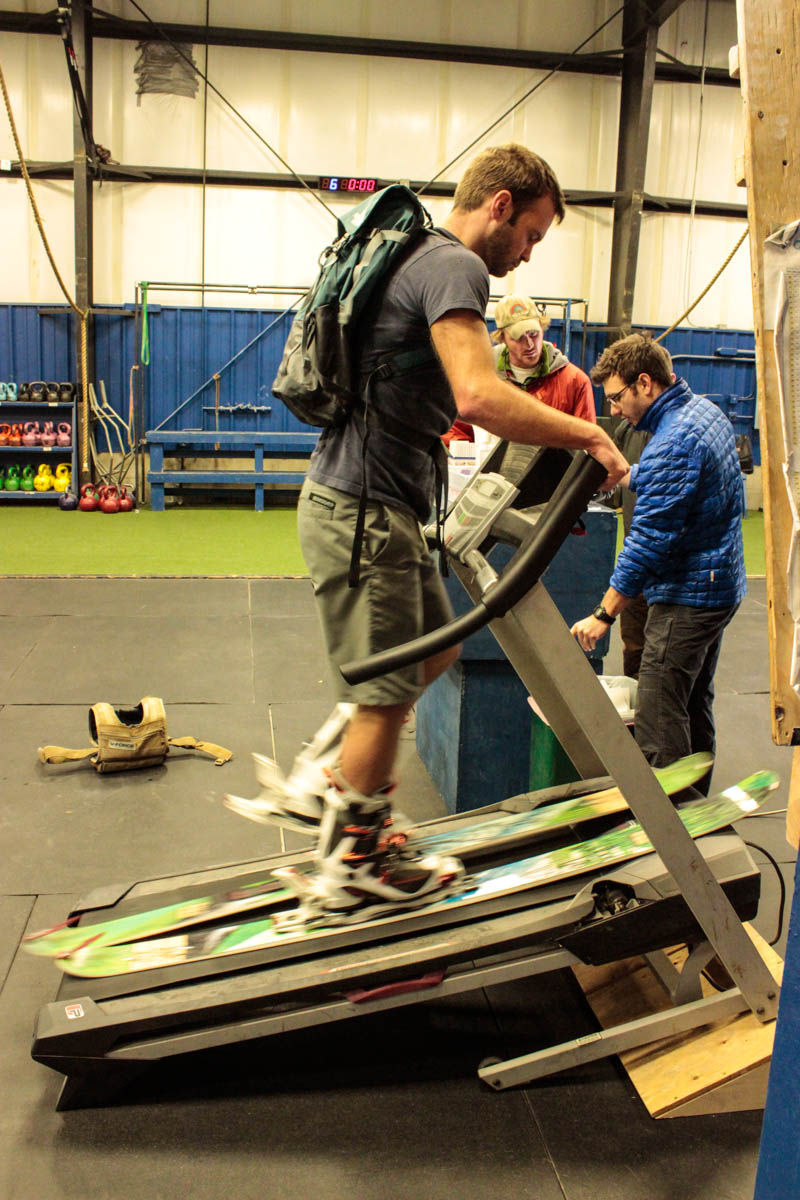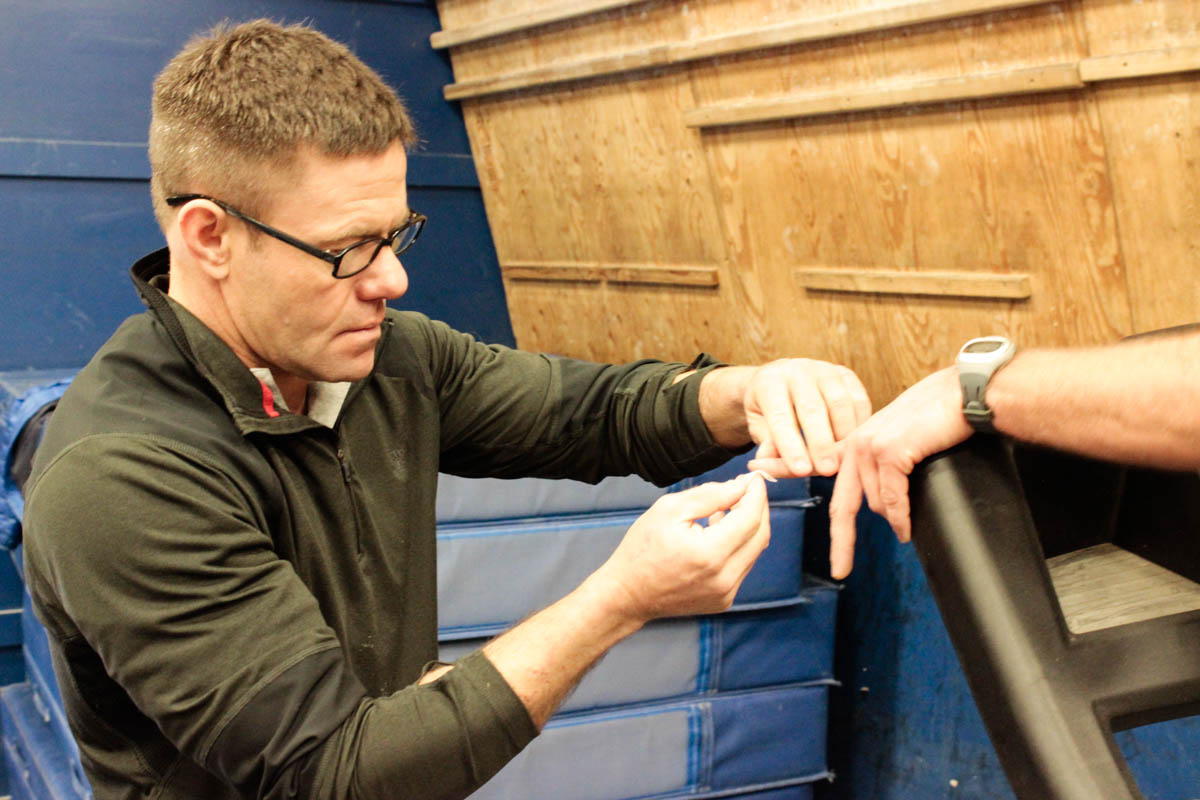by Jordan Smothermon and Rob Shaul
Lactate Threshold heart rate, commonly known as LT, is the rate at which an athlete’s body switches from mostly relying on their aerobic energy system for fuel, to mostly relying on his/her anaerobic energy system to fuel the effort. This is a high heart rate, around 88% of max heart rate for most athletes.

The anaerobic energy system is limited in duration compared to the aerobic system, and once an athlete passes this threshold in effort, how long he or she can stay there is limited. Eventually, lactate will build up in the bloodstream and the athlete will have to slow down.
LT is a common training tool in endurance sports. Endurance athletes aim to push the duration and power they can work at below their LT, and how long they can maintain an effort at or above their LT – anaerobic endurance – before fatiguing. Knowing LT allows athletes to create training zones to moderate volume and intensity in training.
Most endurance sport athletes only have to carry their bodyweight – cycling and running, for example. Military and Mountain Athletes rarely operate unloaded – military athletes are burdened by body armor, rucksacks, ammunition, and weapons. Mountain athletes carry packs with equipment, gear, and supplies.
After a series of lactate threshold heart rate tests on a single subject, we were prompted to ask whether or not carrying a load during a test would change the heart rate at which an athlete reached lactate threshold.
We know additional loading takes more strength, and taxes muscles more than unloaded movement. Would this additional loading and its subsequent strength demand change his LT heart rate?
First Battery of Tests
During the first battery of tests, we ran our single athlete through two unloaded tests and one loaded at 25 pounds. We considered each of the three tests a different “mode, ” or type of locomotion in a mountain/battlefield setting.
The three initial modes we tested were:
(1) Uphill skinning – unloaded. Skins refer to the material mountaineers adhere to the bottom of their skis to ski over flat ground and uphill for ski mountaineering and backcountry skiing. The approximate incline was 10-12% grade and performed on a treadmill.
(2) Uphill running – unloaded. The approximate incline was 10-12% grade and performed on a treadmill.
(3) Uphill Hiking loaded to 25 pounds. We used step ups to a 15-inch box.
Results
LT heart rate was the same for both the unloaded uphill skinning and running. But LT heart rate for the loaded step ups was lower than his LT for unloaded uphill skinning and running.
This finding prompted us to ask if carrying load affected lactate threshold heart rate.
Second Battery of Tests
We retested out athlete, reversing the loading. The second battery of tests was:
(1) Uphill skinning – loaded with a 25# pack. Same incline – 10-12% grade and performed on a treadmill.
(2) Uphill running – loaded with a 25# pack. Same incline – 10-12% grade and performed on a treadmill.
(3) Uphill Hiking – unloaded. We used step ups to a 15-inch box.
Results
We predicted Burke’s LT heart rate would drop for the loaded skinning and running, similar to what we saw in the initial step-up test, considering the extra work muscles would be required to do supporting and moving more weight.
Our prediction was wrong. Load carriage had no significant effect on Burke’s LT heart rate, regardless of mode. What did change was the speed at which Burke reached LT.
The starkest example was skinning. Unloaded, our subject hit his LT at 3.0 mph. Loaded, LT occurred at 2.4 mph. – 20% slower.
We did have some equipment issues during the running test. There was difficulty in keeping the treadmill propped up at the proper angle. As it came down to a lesser incline, heart rate dropped. This presented us with a false speed finding at lactate threshold since for part of the test he was running on a lower incline.
More interesting than the non-finding of load carrying on LT are the questions that arise from the effects of load on speed and performance.

Additional Questions
Question: How do nutrition demands change, if at all, for a loaded athlete versus unloaded?
Internally, we disagree on whether loading affects what type of nutrition needed to sustain effort, and if so, how to address this.
Question: If loading taxes muscles more and makes an athlete move slower, by what percentage does loading both decrease performance and increase the rate of fatigue?
We have to look at athletes working in the mountains in the same way both loaded and unloaded.
Question: What’s a simple, basic field test that any athlete working in similar conditions can use to find their LT heart rate on their own without the use of expensive testing equipment?
What we initially considered different “modes,” (skinning, running, hiking) aren’t. If they were different modes, LT heart rate would have been different for each one. Would a standard running LT test over a flat groundwork for mountain/military activities? One further research question we may need to test this is to determine running LT without an incline and compare it to his unloaded running LT at the 10-12% incline. We predict they would be the same or close.
Question: How does relative strength (strength per bodyweight) affect loaded endurance performance?
Our subject is a proven endurance athlete, but weak relative to his own body weight. Would a relatively stronger athlete push closer to the levels of performance loaded as they achieved unloaded? Is there an effect on loaded endurance performance purely due to strength?
These are a few of the larger questions looming after this small, significant test.
Questions, Comments, Feedback? Email coach@mtntactical.com
You Might Also Like Pro Skier hits 8G’s, Burns 2,900 Calories in a Day of Resort Skiing
